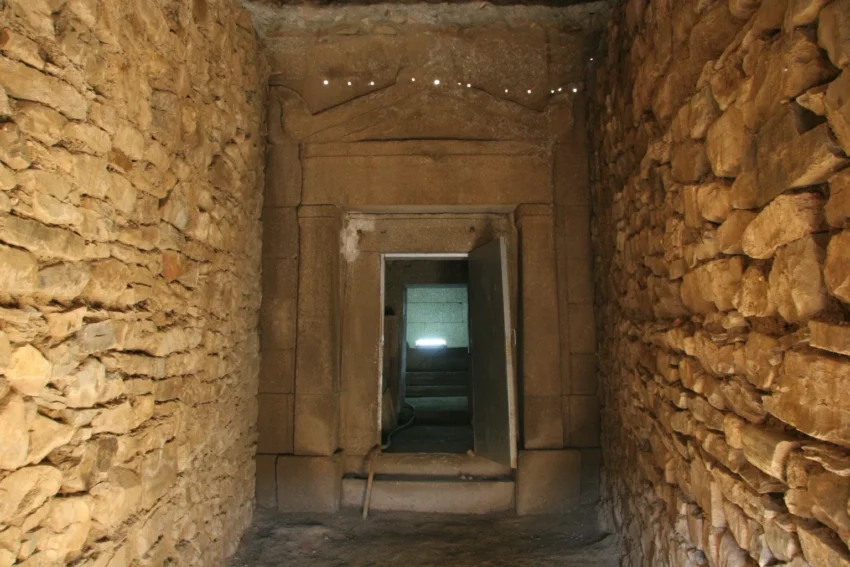Overview of the Griffin Mound Tomb
Located in Bulgaria’s Stara Zagora Province, between the town of Shipka and the village of Sheynovo, lies the Griffin Mound Tomb. Dating back to the late 5th to early 4th century BC, this tomb falls within the Thracian era. A team led by Associate Professor Georgi Kitov discovered the Griffin Mound Tomb on August 19, 1996.
Get your dose of History via Email
Architectural Features
The Griffin Mound Tomb boasts a unique design. A domed chamber sits at the heart of the structure, while a rectangular antechamber with a gabled roof precedes it. This impressive tomb also features a monumental facade that incorporates a large dromos, an access passage leading directly to the entrance. The artistically designed entrance resembles an aedicula, featuring an Ionic door frame and a pediment decorated with palmettes.
Archaeological Findings
While archaeological finds within the tomb itself were scarce, researchers did uncover two gold beads and gold flakes. These discoveries, along with small pieces of silver and bronze, provided crucial clues for dating the structure. The tomb’s construction similarities to the Golyama Arsenalka further suggest a contemporary or slightly later construction date.
Conservation and Public Access
Exciting news for future visitors! In March 2015, the Mayor of Kazanlak announced a project to make the Griffin Mound Tomb, along with other tomb museums in the area like Helvetia and Shushmanets, more accessible to the public. This project involves building a visitor center, an information center, and parking facilities. The primary focus will be on conservation, restoration, and enhancing public access to these significant archaeological sites.
Additional Research in the Area
The TEMP team isn’t stopping there! They’re also investigating the nearby Elenina Mound, where they unearthed a child’s grave containing fascinating artifacts. This grave yielded ancient Greek pottery, a unique wooden amulet shaped like a human body, a clay cult object, and other small artifacts. A particularly noteworthy discovery was a small wooden box containing forty coins from the 4th century BC, marking the first such find in a Thracian grave.
Conclusion
The Griffin Mound Tomb stands as a significant archaeological site, offering valuable insights into Thracian burial practices and architectural achievements. The ongoing conservation efforts and research in the surrounding area, including excavations at the Elenina Mound, continue to shed light on the rich history of this Thracian region.
Sources:


